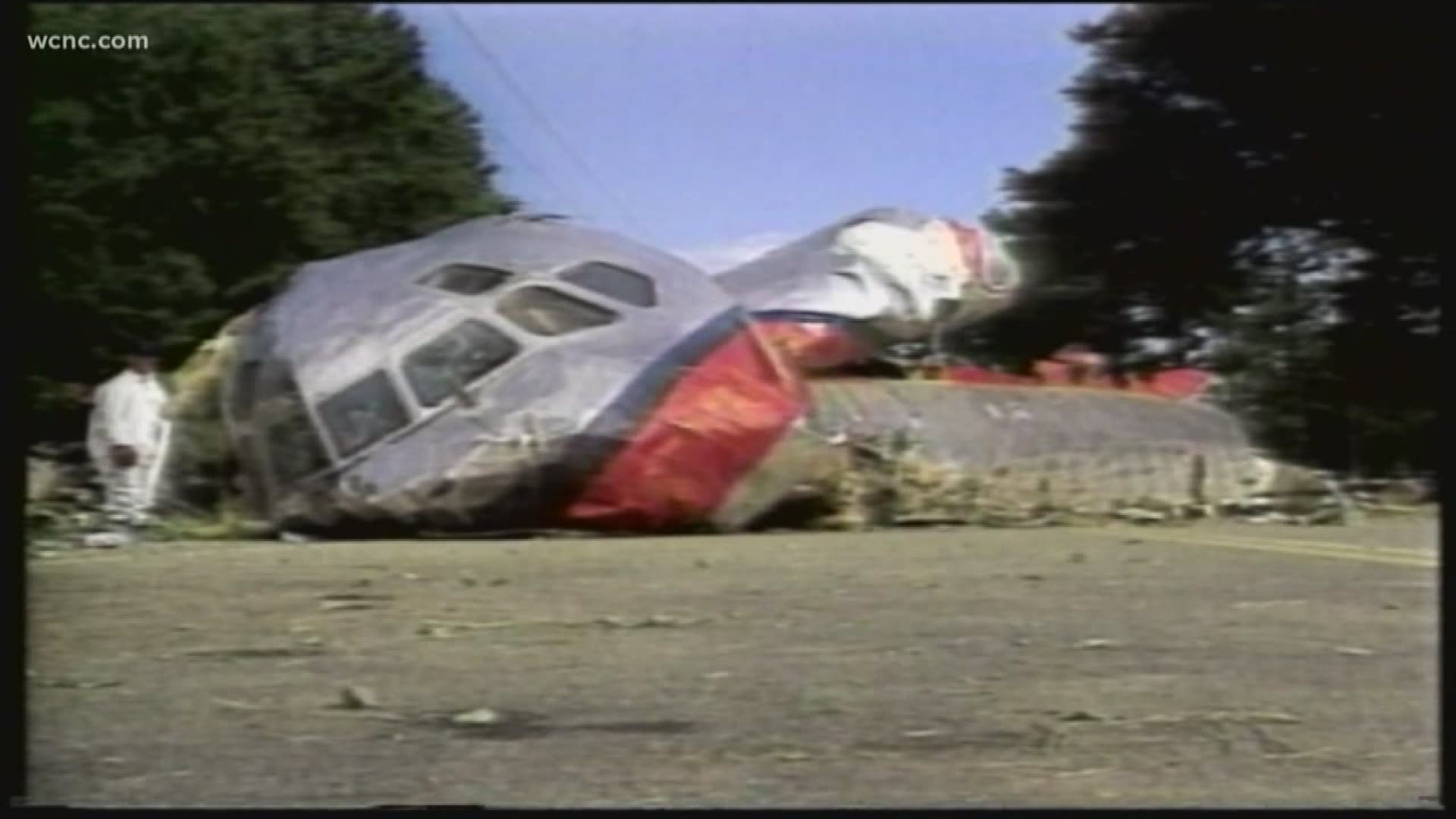CHARLOTTE, N.C. — On this day 25 years ago, the lives of 57 people changed forever in a neighborhood near Charlotte-Douglas Airport.
Just before 6:43 pm on July 2, 1994, US Air Flight 1016 from Columbia, South Carolina crashed into a home, breaking into three pieces and claiming the lives of 37 people. 20 others, including the flight crew, survived.
Despite the loss of so much life, former National Transportation Safety Board investigator Gregory Feith said we're all safer flying today as a result.
"We shouldn't see another accident like this under the same types of circumstances," Feith said. "We learned lessons about the seating, of course about seatbelts and then how the airplane came apart to increase or enhance survivability in future aircraft."
What started as a routine, short flight from Columbia to Charlotte quickly turned dangerous and ultimately deadly as US Air Flight 1016 approached the airport.
It wasn't until long after families received the dreaded news about their loved ones that survivors learned a microburst, a thunderstorm with heavy wind and rain, played a role in the crash.
Feith investigated the crash for the NTSB. He said at the time, neither air traffic control nor the flight crew really knew what they were getting into. The pilots were in the process of trying to land when they realized it was unsafe in those conditions and were going around for another approach, he said.
"The pilots got lulled into a situation where because they could see the airport they really didn't factor in the severity of the weather," Feith said.
While Doppler radar was available to local television news viewers back then, air traffic controllers did not have access.
"That may have been the difference in getting the crew to abort the landing sooner rather than later," Feith said. "Because Charlotte tower did not have all the latest and greatest Doppler weather radio, Congress forced the FAA to expedite the installation of that type of weather information into each of the control towers, so that we wouldn't have another accident like this again."
The location of the crash is now part of secured airport property and is marked by a memorial.
"We honor our customers, crew members and those on the ground whose lives were lost, and our hearts go out to those personally affected by the tragedy of flight 1016," American Airlines, which merged with US Air, said in a statement about the anniversary.

